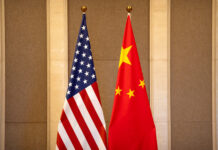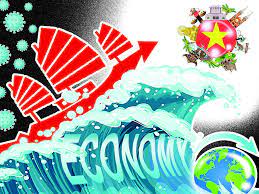Pakistan’s economy has been plagued with serious macroeconomic challenges for some time now. Pakistan has long struggled with dwindling foreign exchange reserves, sluggish export growth, deteriorating economic growth, surging inflation, mounting debt, rising poverty, and a twin deficit crisis. Consequently, the economic progress is being slowed down by such problems, thereby, Pakistan is nosediving vis-à-vis regional competitors.
Nevertheless, it is not too late to resuscitate it, as many of the region’s best-performing nations started at a low point and were able to embark on a path of sustainable economic growth after enacting the necessary reforms. Among others, the economy of Vietnam is one such success story for us to learn from.
Vietnam’s economy was crippled by poverty, and per capita income was stuck between $200 and $300 by the mid-1980s. Vietnam’s journey from a poverty-stricken economy to prosperity commenced in 1986 when the government launched “Đổi Mới”, a series of political and economic reforms aimed at strengthening the private sector’s role and opening the country to foreign investors. Under this initiative, Vietnam’s GDP per capita increased 12 times between 1985 and 2020, reaching over US$2800. Over the same period, poverty rates (US$1.90/day) dropped sharply from over 70 percent to under 2 percent.
The rise of Vietnam’s economy can be attributed to three main initiatives according to the World Bank; firstly, it had enthusiastically incorporated trade liberalization. The signing of many free trade agreements with both Asian and Western countries signaled the gradual liberalization of trade. Vietnam concluded bilateral trade agreements with 72 countries and it also built trade relationships with 165 nations. In 1995, Vietnam signed the ASEAN free trade agreement. In 2000, it executed a free trade agreement with the United States, and in 2007, it joined the World Trade Organization.In the recent decade, Vietnam has agreed or structured 12 bilateral and multilateral free trade agreements (FTAs) with Japan, South Korea, and the European Union. On November 15, 2020, the RCEP (Regional Comprehensive Economic Partnership) was established and Vietnam is an active member of the pact. The regional integration is expected to cover 30% of the world’s population, generate $500 billion in international trade, and yield $209 billion to global revenues by 2030.
Vietnam has benefited from the ‘open-door’ policy, and the country has developed into a manufacturing hub over the previous three decades, with significant foreign businesses such as Intel, Samsung, Adidas, and Nike already having established bases there. With one out of every ten cellphones produced in Vietnam, the country has already established itself as a significant exporter of textiles, electronic goods, and footwear, among other goods.
Furthermore, improvements in the export sector must be accomplished by enhancing domestic industrial production and productivity. To make the labor force more productive, it is essential to invest in human capital. Pakistan must strive to improve its knowledge capital, which will be a major driver of productivity, diversification, higher innovation, and thus higher growth in the future
Secondly, Vietnam has supplemented external liberalization with internal reforms such as deregulation and decreased business costs. Vietnam has implemented several measures aimed at lowering business costs. In 2007, Vietnam was placed 104thin the Doing Business Index, with several major constraints identified by the study. The government has nibbled away at the inefficiencies using the indicators as a guide, and Vietnam has risen to 70thplace in the 2020 Doing Business survey. Vietnam achieved improvement in a variety of areas, including contract enforcement, improving access to credit and electricity, paying taxes, and cross-border trade. Vietnam’s placement on the World Economic Forum’s Competitiveness Index reflects this transformation, climbing from 77thplace in 2006 to 67thplace in 2019.
In the Global Innovation Index 2021, Vietnam was ranked 44thout of 132 countries and is one of four middle-income economies (the others being Turkey, India, and the Philippines) having the potential to reshape the global innovation landscape by catching up to larger economies like China.
Thirdly, Vietnam made enormous investments in human and social capital, leading to the development of a skilled workforce, which had enhanced productivity and competitiveness over time. The Human Development Index (HDI) for Vietnam increased to 0.706 in 2020, up from 0.682 in 2016, leading it to join the group of countries with a high degree of human development. Vietnam’s high level of human development is a tremendous achievement that also opens the door to even greater and faster progress in the future.
Pakistan can achieve its goal of sustainable economic growth by following Vietnam’s model. Pakistan must concentrate on growth-oriented reforms and sound policymaking to achieve this goal. Following in the footsteps of Vietnam, Pakistan should liberalize trade and sign free-trade agreements with potential trading partners. Pakistan’s potential security concerns, increased energy prices and surging taxes are impediments to attract investment. Incremental efforts are required to stabilize the country’s entire social, economic, and political environment so that much-needed foreign direct investment not only be attracted, but in desired sectors such as manufacturing and agriculture.
Furthermore, improvements in the export sector must be accomplished by enhancing domestic industrial production and productivity. To make the labor force more productive, it is essential to invest in human capital. Pakistan must strive to improve its knowledge capital, which will be a major driver of productivity, diversification, higher innovation, and thus higher growth in the future.






















